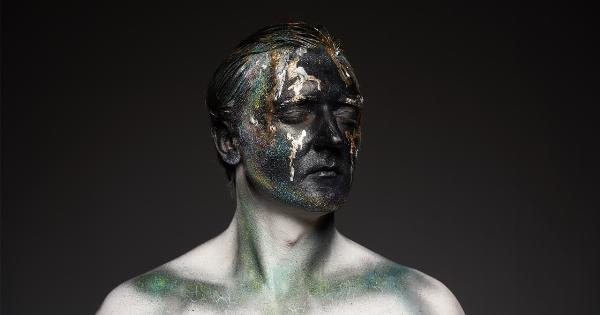Undergoing a mastectomy is a life-altering experience for any woman. It involves the surgical removal of one or both breasts and is usually performed as a treatment for breast cancer.
While this procedure is crucial for eliminating cancer cells, it can often leave women feeling self-conscious and emotionally distressed. Plastic surgery offers a path to recovery by providing reconstruction options that not only restore physical appearance but also boost confidence and aid emotional healing.
In this article, we will explore the various plastic surgery options available post-mastectomy and discuss their significant role in the recovery journey.
Mastectomy and Emotional Impact
A mastectomy can significantly affect a woman’s self-image and self-esteem. The physical changes that occur following the procedure can be distressing and may lead to feelings of grief, depression, and anxiety.
The loss of one or both breasts can make many women feel less feminine or incomplete. Accepting and adapting to these changes is an individual process, but plastic surgery can offer solutions that provide a sense of normalcy and aid emotional well-being.
Understanding Breast Reconstruction
Breast reconstruction is a surgical procedure that aims to restore the shape, size, and appearance of the breasts following a mastectomy.
It can be performed immediately after the mastectomy or delayed until a later date, depending on the patient’s preferences and overall health condition. This surgical option provides an opportunity for women to regain a sense of their pre-mastectomy selves by recreating natural-looking breasts.
Types of Breast Reconstruction
1. Implant-based Reconstruction: This type of breast reconstruction involves the use of silicone or saline implants to recreate the breasts.
During the procedure, a tissue expander may be placed to gradually stretch the skin and create a space for the implant. Once the desired size is achieved, the expander is replaced with the permanent implant. Implant-based reconstruction offers predictable results and requires less surgery time compared to other methods.
2. Autologous Tissue Reconstruction: Also known as flap reconstruction or autogenous reconstruction, this method uses the patient’s own tissues, usually from the abdomen, buttocks, or back, to create breasts.
The tissue is transferred to the chest area and shaped to resemble natural breasts. Autologous tissue reconstruction provides a more natural look and feel but requires a longer recovery period and additional surgical sites.
3. Combination Reconstruction: As the name suggests, combination reconstruction combines elements of both implant-based and autologous tissue reconstruction.
In this approach, implants are used to provide volume and shape, while autologous tissue is utilized to improve the overall aesthetic and texture of the reconstructed breasts.
Factors to Consider
1. Physical Health: Before undergoing any type of surgery, it is essential for women to be in good overall health. Smoking and certain medical conditions can increase the risks and complications associated with plastic surgery.
Consulting with a plastic surgeon who specializes in breast reconstruction will help determine the best course of action based on individual health considerations.
2. Emotional Readiness: Breast reconstruction is not just a physical transformation; it also involves emotional and psychological aspects.
It is crucial for women to be emotionally prepared for the surgery and have realistic expectations about the outcomes. Discussing concerns, fears, and desires with a supportive healthcare team can greatly assist in the decision-making process.
3. Timing of Reconstruction: Women can choose to have immediate reconstruction, performed during the mastectomy surgery, or delayed reconstruction, done months or even years after the mastectomy.
Immediate reconstruction may require coordination between the breast surgeon and plastic surgeon, while delayed reconstruction allows for emotional healing and a thorough evaluation of further treatment options, such as radiation or chemotherapy.
Benefits of Reconstruction
1. Physical Restoration: Breast reconstruction plays a vital role in restoring physical appearance and symmetry. It helps women regain their feminine identity by reconstructing the shape and size of the breasts.
Reconstruction also allows for the prospect of wearing regular clothing, including swimsuits or low-cut tops, without feeling self-conscious.
2. Psychological Well-being: The emotional impact of a mastectomy cannot be underestimated. Studies have shown that breast reconstruction significantly improves self-esteem, body image, and overall quality of life for breast cancer survivors.
Feeling whole and complete again can have a profound positive effect on mental health and emotional well-being.
3. Eliminating External Prosthetics: Breast reconstruction offers the advantage of eliminating the need for external prosthetics, such as breast forms or silicone bras.
This not only provides a more comfortable experience but also allows women to participate in physical activities without worry or inconvenience.
Considering Non-Surgical Options
Plastic surgery is not the only path to recovery post-mastectomy. Non-surgical options such as breast prostheses, also known as breast forms or breast inserts, can also restore symmetry and improve body confidence.
These external prosthetics are designed to be worn inside a bra or attached directly to the chest wall. They are available in various shapes, sizes, and materials, allowing women to find the most comfortable and natural option to suit their needs.
Support and Resources
It is important for women considering breast reconstruction to seek support from healthcare professionals, support groups, and other survivors who have gone through a similar experience.
Organizations such as the American Cancer Society and the National Cancer Institute offer valuable resources and information to assist women in making informed decisions about their recovery journey.
Remember, the decision to undergo breast reconstruction is deeply personal and should be made based on individual circumstances, preferences, and emotional readiness.
Plastic surgery can provide a path to recovery, but it is crucial to prioritize physical and emotional well-being throughout the process.
Conclusion
Plastic surgery, specifically breast reconstruction, plays a significant role in the recovery journey post-mastectomy. It offers a path to physical and emotional healing by restoring the shape and appearance of the breasts.
Whether through implant-based reconstruction, autologous tissue reconstruction, or a combination of both, plastic surgery provides women with the opportunity to regain confidence, improve body image, and ultimately move forward in their lives with a renewed sense of self. Remember, every woman’s recovery journey is unique, and consulting with a qualified plastic surgeon is essential to explore the reconstruction options available and make an informed decision.




























